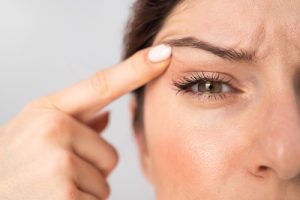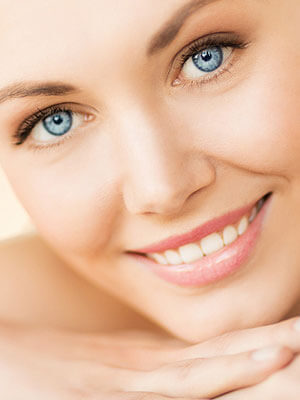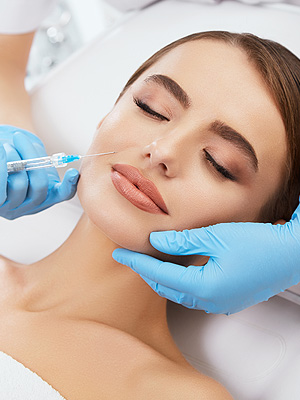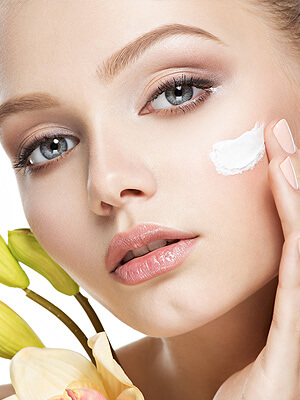Do you tend to look tired all the time due to excess skin around your eyes? Or does it make you look older than you are?
Sagging skin is common with aging, including around the eyes. Other factors like smoking, sun exposure, and genetics can also contribute to droopy eyelids.
Blepharoplasty, also known as an eyelid lift, can address this issue, restoring a more youthful, energetic look. Keep reading to find out what happens during the blepharoplasty procedure!
What Takes Place During the Blepharoplasty Process?

The day of your blepharoplasty, you will arrive at our office. You will typically be given local anesthesia to ensure the affected area is numb during the procedure.
There are two types of blepharoplasty: upper lid and lower lid. The process is similar but has some differences.
You may get one or the other or both. If both are needed, both procedures can be performed at the same time.
Upper Eyelid Blepharoplasty
For an upper lid blepharoplasty, an incision is made in the eye’s natural crease. This allows the eye surgeon to remove excess skin.
They can also remove some fat. Then, the incision is closed using sutures.
In addition to removing skin and fat, the muscle that lifts the eyelid can also be tightened as an additional surgery.
Lower Eyelid Blepharoplasty

For a lower lid blepharoplasty, an incision is made either on the inner eyelid or the external crease below the lashes. Unwanted fat and skin can then be removed or rearranged.
As with an upper lid blepharoplasty, the incision is then closed. Some patients choose to undergo laser resurfacing during a lower lid blepharoplasty.
This will make the skin around the lower lids appear even smoother and firmer. For just an upper or lower lid blepharoplasty, the entire procedure usually takes about an hour.
If you are getting both an upper eyelid and a lower lid blepharoplasty, it usually takes a couple of hours.
What Is Recovery from Blepharoplasty Like?
Immediately after your procedure, your doctor and/or surgical technician will ask that you stick around for a little while so they can monitor you for any potential complications. You’ll then be able to return home.
You should plan to have someone else drive you home. This is because you have taken some medications and could be swollen, which can impair your vision.
Recovery Side Effects

During the healing process, you may experience blurry vision, light sensitivity, watery eyes, swelling, bruising, and soreness. Lid Lift Goggles can help considerably with these symptoms. The goggles should be worn 80% of your day to help alleviate symptoms.
Medications
Be sure to take all medication as directed. Your surgeon will prescribe you medications to assist with healing. You should take medications as directed.
Dissolvable stitches will go away on their own. Traditional sutures typically need to be removed after about a week.
Rest and Relaxation
For a week following your procedure, you should take it easy and avoid strenuous activities like running and swimming. You should also avoid rubbing your eyes.
Refrain from smoking, as this can make it harder for your body to heal.
Returning to Work
Most people are able to return to work within a week or two. By that point, swelling and bruising will have decreased significantly.
You can resume most physical activities in about a month. It can take three to six months for your eyes to heal completely.
During this time, scars will continue to fade, and the appearance of the eyes will continue to improve.
Who Is a Good Candidate for Blepharoplasty?
Blepharoplasty can provide excellent results for those who have extra skin that is sagging or drooping around their eyes. If you have pockets of fat in these areas, blepharoplasty can brighten up your appearance and make you look more refreshed and youthful.
It can also make your upper lid creases more visible. While many people choose blepharoplasty for cosmetic reasons, it can also be considered medically necessary if sagging skin is obstructing your vision. Your eye doctor will order specific testing to help determine if this would be covered by your insurance.
To be considered a good candidate for blepharoplasty, you should have good overall health. Some conditions can affect the healing process.
Finally, you should have realistic expectations for what the procedure can achieve. Another procedure in addition to or instead of blepharoplasty may be needed to deliver the results you are looking for.
To determine whether blepharoplasty is a good fit for you, your eye doctor at Eye Care Specialists will evaluate your needs and discuss your goals during a consultation.
Are you interested in what blepharoplasty can do for you? Schedule a blepharoplasty consultation at Revive MedSpa in Scranton, Hazleton, or Kingston, PA, today!



